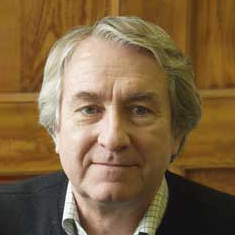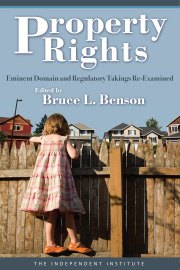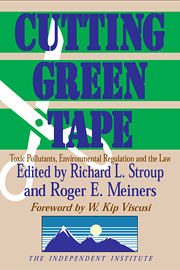When Eastern Europe began to open up in the late 1980s, one of the great shocks was the severity of its environmental problems. Journalists reported on skies full of smoke from lignite and soft coal, children kept inside for much of the winter because of unsafe air, and horses that had to be moved away from the worst areas after a few years or they would die.
Many of the environmental ills reflected an abysmally low level of technology. Old, polluting factories of the kinds that are dim memories in the United States were the mainstay of socialist industry. Smelly, sluggish automobiles polluted the roads.
Energy waste was tremendous. Their own statistics showed that socialist economies were using more than three times as much steel and nearly three times as much energy per unit of output than market economies.[1]One cannot look about in Warsaw or Moscow, Budapest or Zagreb, Krakow or Sarajevo, wrote economist W. W. Rostow in 1991, without knowing that this part of the world is caught up in a technological time warp.[2]
Not everyone realized it at the time, but the state of the environment was directly connected to the absence of property rights in the Soviet system. The authorities had refused to allow most resources to be privately owned. Most market exchanges were criminal acts, and entrepreneurship of most kinds was declared to be criminal behavior. Production was centrally planned, with land and other resources owned by the state, not individuals.
Although there were many repressive acts in the former Soviet Union and the Eastern European nations, the absence of property rights, along with the absence of the markets that result from the exchange of property rights, was enough to devastate the environment.
To understand why, it is helpful to look at the reasons why private property rights protect the environment. There are several:[3]
1. Owners have incentives to use resources productively and to conserve where possible. Owners can obtain financial rewards from using resources productively and they have a strong incentive to reduce costs by conserving on their use of each resource. In the pursuit of profits, business firms have a strongincentive to implement new resource-saving technologies.
Such incentives were absent in the Eastern bloc under socialism. Consider the Trabant, the people’s car produced in East Germany between 1959 and 1989.[4] (Production stopped shortly after the Berlin Wall came down.)
The Trabant provided basic transportation and was easy to fix. But it was slow (top speed 66 mph), noisy, it had no discernible handling, it spewed a plume of oil and gray exhaust smoke, and it didn’t have a gas gauge. The exhaust was so noxious that West Germans were not allowed to own Trabants. When the magazine Car and Driver brought one to the United States, the EPA refused to let it be driven on public streets.
The Trabant was so bad partly because its design was basically the same as it had been when the car was first manufactured in 1959. The latest model, the 601, had been introduced in 1964, and was essentially unchanged 25 years later.
Manufacturers could not reap a profit from making a better car, so they had no incentive to adopt new, cleaner technology that would give better performance. Indeed, because factories were government-owned, there was little incentive to produce any cars at all in East Germany. So few automobiles were available that people waited an average of 13 years to get their Trabant.
2. Private ownership of property provides an incentive for good care that is lacking under government control. If a resource is well cared for, it will be more valuable and add more to the personal wealth of its owner. If the owner allows the resource to deteriorate or be harmed by pollution, he or she personally bears the cost of that negligence in the form of a decline in the value of the resource.
Throughout the Soviet Union under Communism, resources were routinely wasted. In fact, the emphasis was on using up resources, not on producing them—for a good reason. Central planners often measured the use of inputs to determine whether a factory or other entity was carrying out the central plan. For example, Ann-Mari Satre Ahlander reports that despite the low per capita production of agricultural crops, the use of fertilizers and herbicides was high.[5] That is because using them was a sign that work was being done, even though excessive use of these chemicals could have harmful effects.
A story is told about a part of Estonia where the underground water is flammable because vast quantities of aviation fuel were dumped into the ground and they seeped into the water. The fuel was assigned to a nearby Soviet military station to be used for flying practice missions. To make sure that the pilots had flown the required number of hours, the military superiors monitored the amount of fuel the pilots used. When the pilots did not want to fly the required hours, they falsified their reports. To evade detection, they got rid of the fuel by dumping it onto the ground.[6]
3. A resource owner has legal rights against anyone who would harm the resource. The private owner of a resource has more than just the incentive to preserve the value of that resource. Private property rights also provide the owner with legal rights against anyone (usually including a government agency) who invades—physically or by pollution—and harms the resource. The private owner of a forest or a farm will not sit idly by if someone is cutting down trees without permission or invading the property with hazardous pollutants, and lawsuits can be used to protect those rights. A private owner could probably have stopped the dumping of aviation fuel on the Estonian farmland mentioned above.
But in the Eastern bloc, such protection was absent. Peter J. Hill reports that in Bulgaria heavy metals in irrigation water lowered crop yields on Bulgarian farms. The industrial sources of the metals were known, but the farmers had no recourse. Without a system of redress through the courts, says Hill, the farmers had no actionable claim against those causing the problems.[7]
4. Property rights provide long-term incentives for maximizing the value of a resource, even for owners whose personal outlook is short-term. If using a tract of land for the construction of a toxic waste dump reduces its future productivity, its value falls today, reducing the owner’s wealth. That happens because land’s current worth reflects the net present value of its future services—the revenue from production or services received directly from the land, minus the costs required to generate the revenues (and both discounted to present value terms).
Lake Baikal is the largest and deepest freshwater lake on Earth. Once known for its purity, it is now heavily polluted because Soviet planners decided to build paper mills at its edge and failed to reduce the emission of pollutants into the water. According to one source, the effluent is discharged directly into the lake and has created a polluted area 23 miles wide.[8] Clearly,the value of the lake and its surrounding land has been seriously diminished by pollution.
In a society of private ownership, the owner of lake property would envision a place that would attract tourists and homebuyers. Such an owner would have a strong incentive to maintain the value of this property by preventing its deterioration. But government planners had no incentive to protect it.
Now that the Soviet system has broken down, the environmental destruction in the Eastern bloc should be nearing its end. Simply closing down the polluting factories, many of which were wasting resources, anyway, will reduce the pollution. But how fast and how well the environment will recover crucially depends on the restoration of private property rights.
Notes
[1] Mikhail Bernstam, The Wealth of Nations and the Environment (London: Institute of Economic Affairs, 1991), p. 24.
[2] W. W. Rostow, “Eastern Europe and the Soviet Union: A Technological Time Warp,” in The Crisis of Leninism and the Decline of the Left, Daniel Chirot, ed. (Seattle: University of Washington Press, 1991), p. 60-73, at 61.
[3] For a more detailed discussion, see James D. Gwartney and Richard L. Stroup, Economics: Private and Public Choice, 8th edition (Fort Worth: Dryden Press, 1997), Chapter 28.
[4] Information about the Trabant comes from articles in Car and Driver in April and December 1990.
[5] Ann-Mari Satre hlander, Environmental Problems in the Shortage Economy (Aldershot, England: Edward Elgar, 1994), p. 19.
[6] A story told to the authors by an Estonian official.
[7] Peter J. Hill, “Environmental Problems under Socialism,” The Cato Journal, Volume 12, no. 2 (Fall 1992), pp. 321-335, at 328.
[8] Hill, p. 322, citing information from Time magazine, January 2, 1989.












